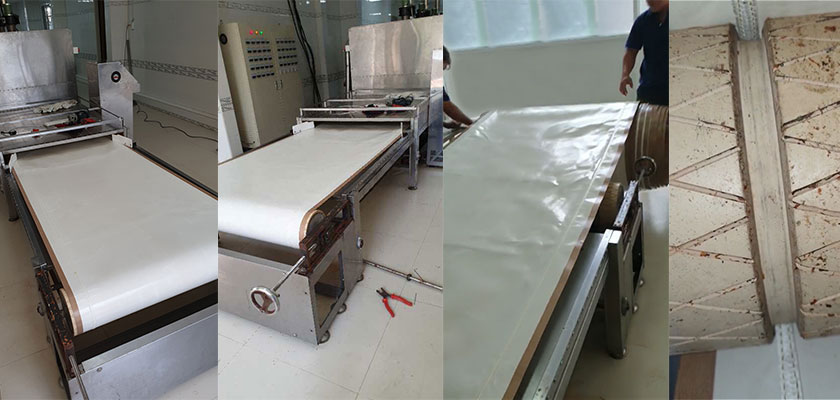Let us learn PTFE Teflon high temperature conveyor belt wear repair method!
1. Rubber repair glue covering repair method
Rubber repair glue produced at home and abroad is a two-component polyurethane glue. When using, pour the two together and stir them to fill the surface to be repaired. After curing for a certain period of time, it becomes an elastic body similar to rubber. The curing time is generally 05-6h, which is related to the ambient temperature during curing. The cured colloid has good bonding performance with the surface of PTFE Teflon high temperature conveyor belt. The experimental data in the laboratory indicate that it can reach 6kn/m180 degree peeling strength). Therefore, the bonding and sealing of the repair surface are very good, and there will be no situation where water vapor enters the bonding surface and corrodes the wire rope. More advantageously, its wear resistance is quite excellent, and the Akron wear value is 4-6 times lower than that of rubber. And the superior wear resistance is the key requirement for repairing local wear of conveyor belts. In summary, this method is a very effective method for repairing local wear of wire rope conveyor belts.
2. Rubber patching method
The rubber patching method using German technology has the biggest advantage of fast repair speed. After grinding and cleaning the patched area, apply adhesive glue, paste rubber, and start running. The disadvantage is that the rubber will fall off after 60-90 days of operation. The bigger problem is that if the conveyor belt is operated in a humid environment, water vapor will accumulate in the gaps of the bonding surface and corrode the wire rope. Over time, the wire rope will rust and break. It may even cause the entire PTFE Teflon high temperature conveyor belt to break suddenly. In addition, this repair method is also expensive.
3. Local rubber vulcanization method
Use a small vulcanizer to vulcanize the local damaged area. Due to the limitation of the size of the vulcanizer, the repair speed is only about 0.5m/h. This method is not suitable for long-distance repairs.
 CHINA CHANGWEI GROUP
CHINA CHANGWEI GROUP

